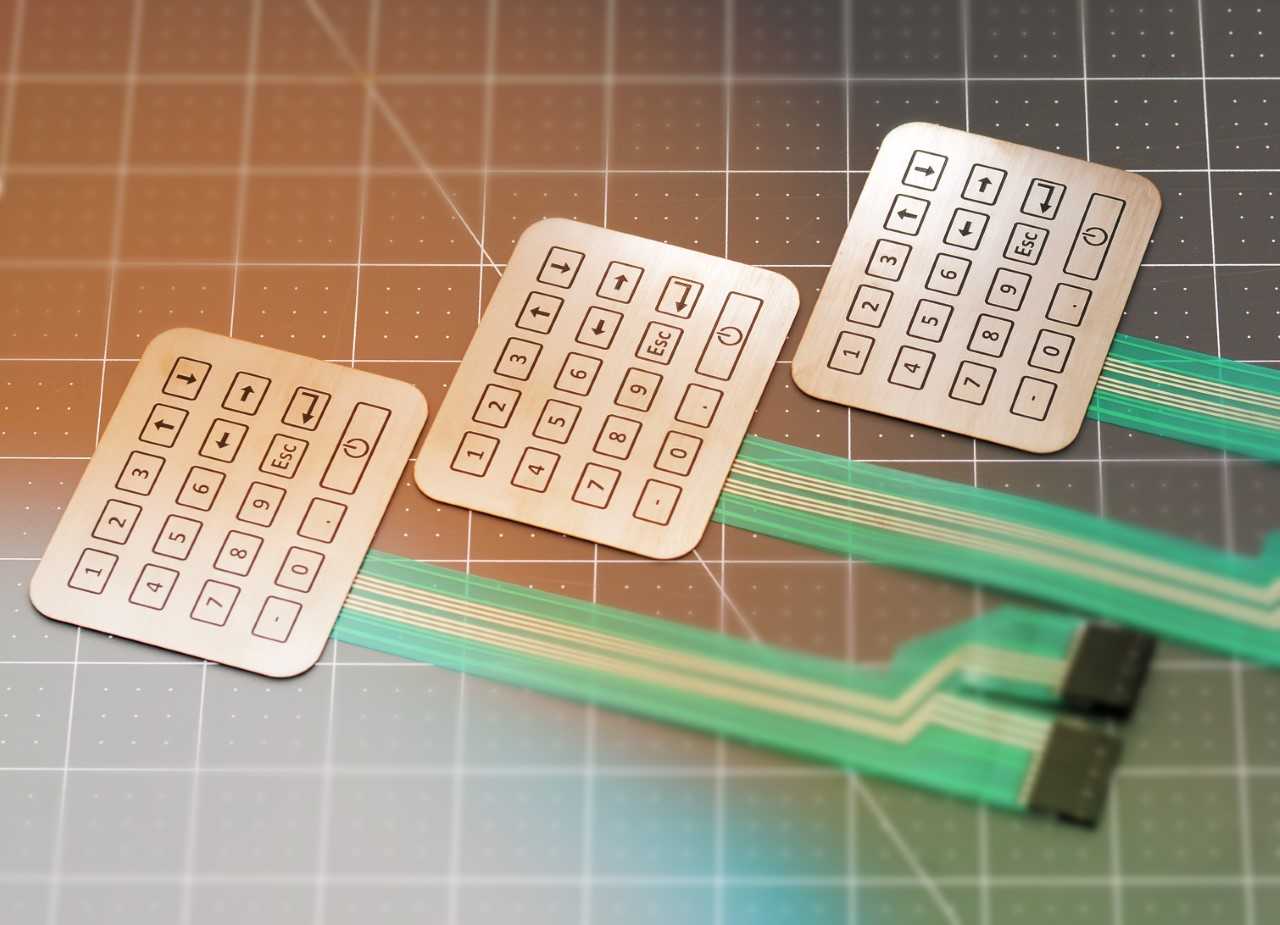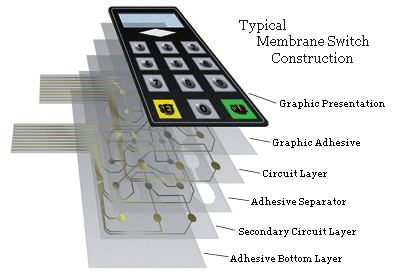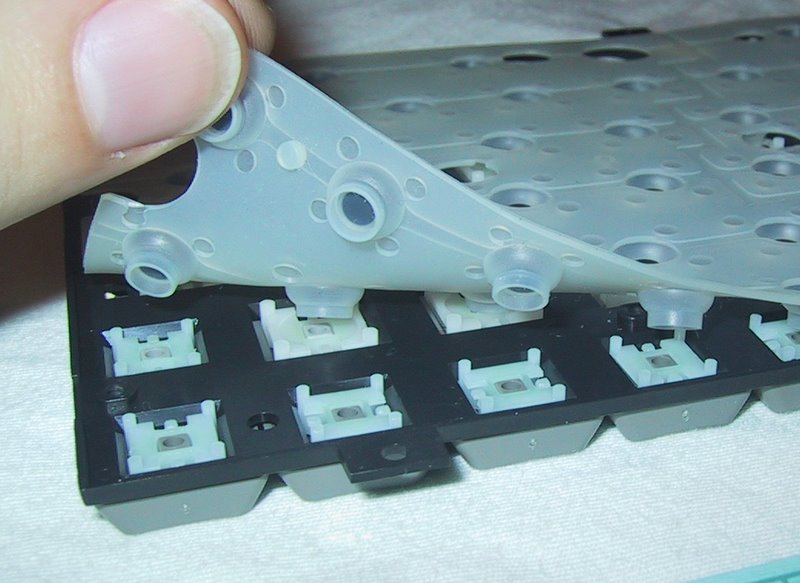Many engineers prefer working with a proven membrane switch manufacturer for custom solutions.
Many engineers prefer working with a proven membrane switch manufacturer for custom solutions.
Blog Article
What to Seek When Choosing a Membrane Layer Switch for Your Job
When you're selecting a membrane layer button for your job, a number of vital variables come right into play. You'll require to assume about the materials, layout, and exactly how well it aligns with your brand.
Comprehending Membrane Layer Switch Components
When you dive right into the world of membrane layer switches, it's necessary to grasp the crucial components that make them function. The switch normally consists of 3 major layers: the graphic overlay, the spacer layer, and the circuit layer. The graphic overlay gives the aesthetic user interface, displaying switches and icons you require for simple navigation. Under that, the spacer layer warranties there's sufficient distance in between the circuit and the overlay, permitting the switch to activate without consistent stress.
The circuit layer, usually made from published conductive inks, produces the electrical paths. When you push a button, the circuit closes, sending a signal to the tool. Recognizing just how these layers function together assists you choose a membrane layer switch that's trustworthy and fits your job needs. Pay close focus to the thickness and material of each layer, as these aspects affect resilience and functionality in various environments.
Product Selection and Its Impact
Selecting the right materials for your membrane layer button can significantly influence its performance and durability. The choice of substratum, usually polyester or polycarbonate, influences durability and versatility. Polyester is more abrasion-resistant, while polycarbonate supplies better clarity and stamina.
Next, consider the adhesive. It requires to endure environmental factors like dampness and temperature modifications. A solid sticky warranties that your membrane layer button remains intact in time.
Don't forget concerning the visuals overlay. The printing technique utilized, whether silkscreen or digital, affects the switch's appearances and longevity. Top quality inks will certainly resist fading and damaging, preserving an expert appearance.
Finally, think of environmental problems. If your gadget will be subjected to rough chemicals or extreme temperature levels, pick materials made to withstand these obstacles. Your choices in materials will eventually identify the button's dependability and individual fulfillment.
Design Factors To Consider for Customer Experience
Picking the best products lays the foundation for a successful membrane layer switch, but the layout additionally plays a substantial role in customer experience. You'll intend to reflect on just how the design influences functionality (membrane switch manufacturer). Maintain switches and symbols intuitive and well-spaced, making it easy for customers to navigate without complication

Shade and contrast are additionally important; warranty that your style is aesthetically attractive yet still useful. High comparison assists individuals easily recognize buttons, specifically in low-light conditions.
Finally, reflect on the general visual. A sleek and contemporary layout can elevate user understanding and make your item more attractive. Stabilizing capability with an interesting style will result in a much better individual experience and ultimately, a much more successful item.

Ecological Aspects and Sturdiness
When picking a membrane layer switch, you require to consider just how it'll perform in various atmospheres. Variables like temperature level resistance, dampness and chemical direct exposure, and mechanical wear can significantly affect its toughness. Recognizing these components will help you choose a switch that takes on your certain problems.
Temperature Resistance Demands
As environmental problems can differ extensively, understanding temperature level resistance is vital for making sure the toughness of your membrane layer switch. You need to assess the temperature array in which your tool will run. Heats can create materials to deteriorate, resulting in failing, while low temperature levels may make elements fragile and prone to fracturing. See to it to inspect the specs of the products utilized in the switch, like the adhesive and overlay, as they straight effect performance. It's likewise a good idea to contemplate potential temperature level changes and their effects on the switch's reliability. By picking a membrane layer button with appropriate temperature resistance, you'll improve its lifespan and keep performance in tough atmospheres. Select sensibly to stay clear of expensive substitutes down the line.

Wetness and Chemical Exposure
Dampness and chemical direct exposure can substantially influence the efficiency and longevity of your membrane switch, so it's critical to recognize the atmosphere in which it will be used. Always speak with the producer's specifications for chemical compatibility to assure your membrane button maintains its functionality over time. By focusing on wetness and chemical resistance, you can enhance the durability of your button in difficult environments.
Mechanical Put On and Tear
While you might focus on functions like appearances and functionality in your membrane switch, mechanical wear and tear can greatly impact its efficiency over time. Constant pushing can lead to deterioration of products, creating issues like tactile feedback loss or also switch failure. Selecting a long lasting switch guarantees long life and dependability, stopping costly replacements and downtime in your job.
Modification Options for Branding
When it comes to branding your membrane switch, customization options are essential. You can choose style aspects and colors that reflect your brand, along with particular logo placement and size to boost visibility. Furthermore, choosing the right products and appearances can boost the total appearance and feel, making your item attract attention.
Style Elements and Colors
A large array of style aspects and colors can make your membrane button not simply functional however additionally visually enticing, improving your brand identification. When choosing colors, consider your brand's scheme; they must resonate with your target market and stimulate the right emotions. You can additionally check out numerous coatings like matte or shiny to create various visual results. Don't forget regarding appearances; including a responsive element can boost user experience and make your button attract attention. Consider incorporating custom-made graphics or patterns that line up with your brand message. By attentively choosing style components and colors, you not just develop an item that looks great but additionally strengthens your branding continually and efficiently.
Logo Design Positioning and Size
After completing your layout elements and shades, the next action is to concentrate on logo positioning and size. Your logo design is an essential element of your branding, so you'll want it to stand apart without frustrating various other design aspects. Assess where your logo will certainly be most noticeable and impactful; typical placements include the leading or center of the switch.
Think of the dimension also-- also big and it could overshadow useful aspects, too little and it might obtain shed. Aim for an equilibrium that enables your logo design to webpage be conveniently recognizable while keeping the general looks. Do not neglect to contemplate how the logo design aligns with individual interaction. This attention to detail will certainly improve both capability and brand identification in your job.
Material and Texture Alternatives
Choosing the appropriate materials and appearances for your membrane layer switch can considerably improve both its performance and aesthetic allure. You'll desire to review options like polyester or polycarbonate, as they supply sturdiness and resistance to use. The structure of the surface additionally plays a crucial duty; smooth finishes provide a streamlined look, while distinctive surface areas can improve hold and responsive responses.
Customizing the materials and appearances allows you to mirror your brand identification efficiently. You could choose a matte coating to convey sophistication or a glossy appearance for a modern touch. Don't forget color alternatives, as vibrant tones can make your button stand out, while soft tones can develop a much more classy look
Cost vs. Quality: Discovering the Right Equilibrium
When you're handling the choices for membrane layer switches, balancing price and high quality can really feel overwhelming. You intend to assure that you're getting a trusted product without breaking the bank. Beginning by determining your project's certain requirements. Are you prioritizing resilience or aesthetics? A lower-cost switch may conserve you money upfront, yet if it compromises functionality, you might deal with greater replacement costs later.
Try to find producers that supply a good mix of price and high standards. Study their reputation and consumer reviews to assess integrity. In some cases, investing a bit much more in quality materials can conserve you from future headaches.
Also, think about the lasting efficiency and warranty alternatives. A slightly more expensive button with a solid warranty might prove to be a smarter investment. Ultimately, it has to do with discovering that pleasant place where you satisfy your budget plan while guaranteeing your task's success.
Examining and Quality Guarantee Protocols
While you might find the excellent membrane layer switch design, guaranteeing its quality with extensive screening protocols is important for long-term success. Beginning by verifying that the supplier complies with market criteria, such as IPC/WHMA-A -620, to guarantee a trusted product. membrane switch manufacturer. You'll intend to examine for comprehensive testing techniques, including ecological, mechanical, and electric evaluations
Make specific the switches undertake sturdiness screening, simulating real-world usage to identify any kind of possible failings. Take note of the producer's quality control process, which must include normal inspections and audits.

Do not neglect to request for examples and perform your very own examinations to verify compatibility with your project. Lastly, consider just how frequently the supplier updates their methods; development in testing can result in improved top quality. By prioritizing these testing and quality control protocols, you'll increase the probability of a successful and long important site lasting membrane layer switch for your application.
Often Asked Inquiries
Exactly how Lengthy Does a Membrane Switch Over Normally Last?
A membrane layer switch normally lasts anywhere from 1 to 10 million cycles, relying on use and environmental elements. You'll wish to take into consideration your details needs to guarantee article it fulfills your longevity requirements successfully.
Can Membrane Switches Be Fixed if Harmed?
Yes, you can sometimes repair membrane switches if they're harmed, but it frequently relies on the extent of the damage. Minor concerns may be reparable, while much more significant damages normally requires substitute for correct capability.
What Are the Common Applications for Membrane Buttons?
Membrane layer buttons are generally made use of in appliances, clinical tools, and auto controls. You'll locate them in customer electronics, industrial equipment, and even video gaming consoles. Their convenience makes them ideal for different interface and settings.
Are There Details Certifications for Membrane Switches?
Yes, there are specific accreditations for membrane layer switches. Search for UL, CE, and RoHS qualifications to ensure safety and security and conformity. These certifications indicate the switch satisfies industry requirements for high quality and ecological safety and security.
How Do I Ensure Appropriate Installation of a Membrane Change?
To ensure correct setup of a membrane button, clean the surface completely, align it thoroughly, and apply also stress. Follow producer guidelines for glue curing time to optimize toughness and functionality.
Conclusion
When selecting a membrane layer switch for your project, maintain these vital elements in mind: prioritize long lasting materials, focus on straightforward layout, and think about customization for your brand name. By very carefully evaluating these elements, you'll assure your membrane layer switch not just meets your task requires yet also improves customer experience and reflects your brand identity effectively.
Report this page